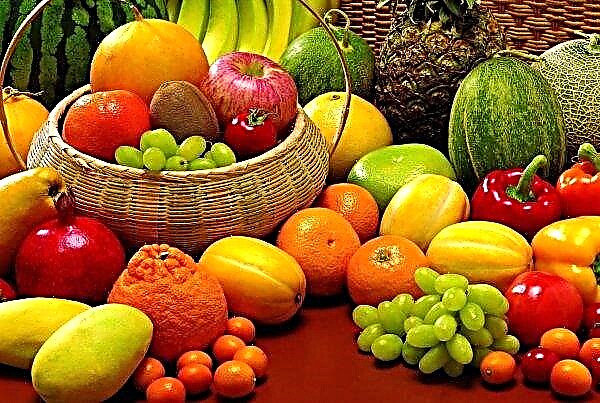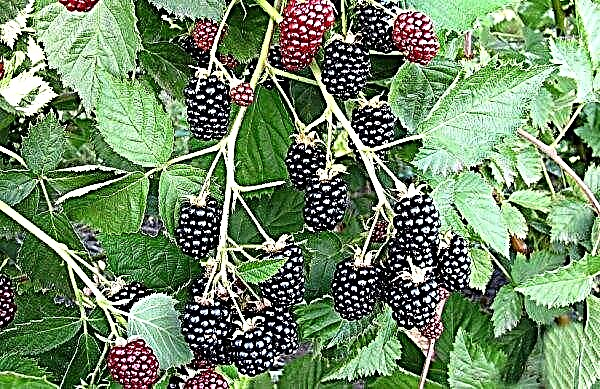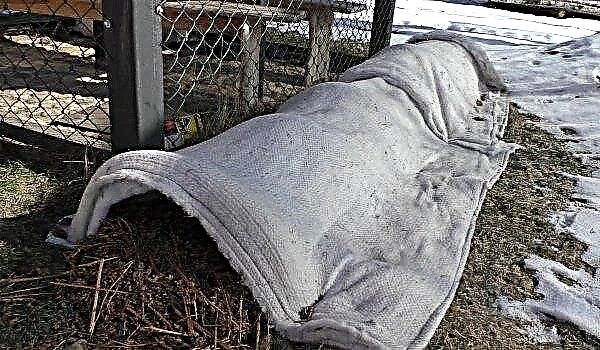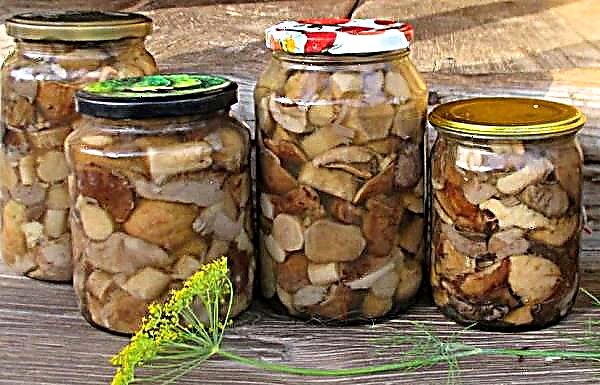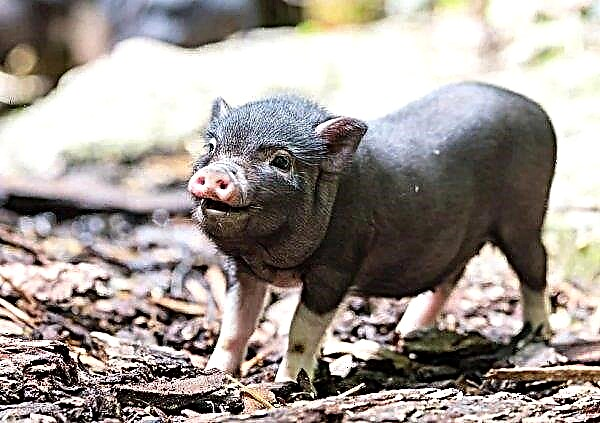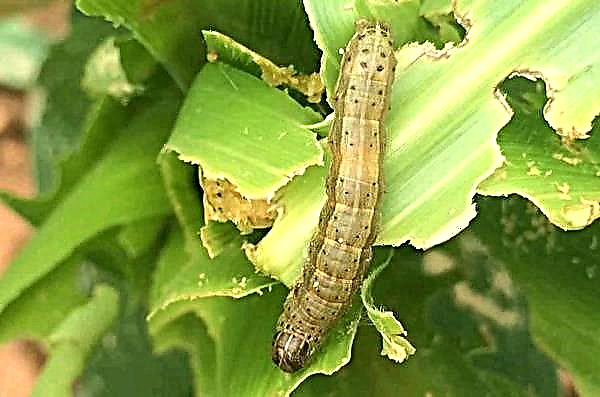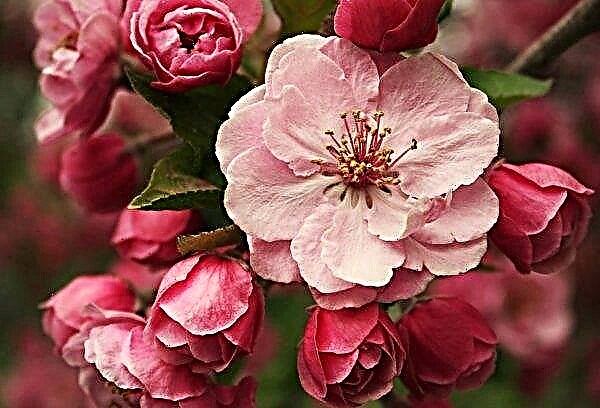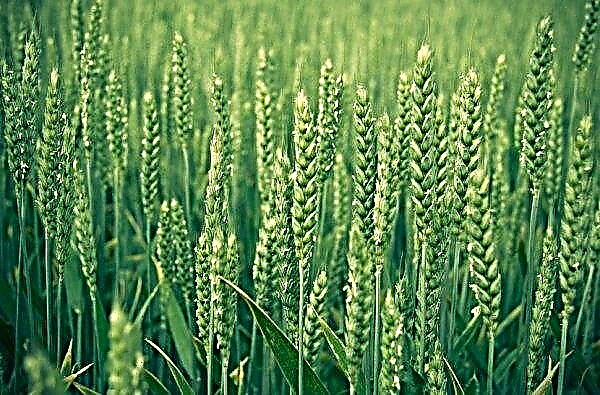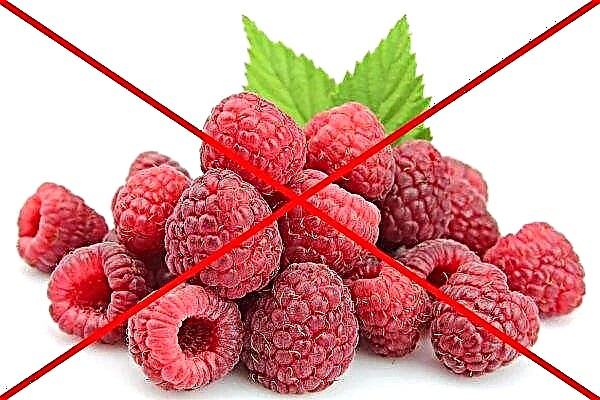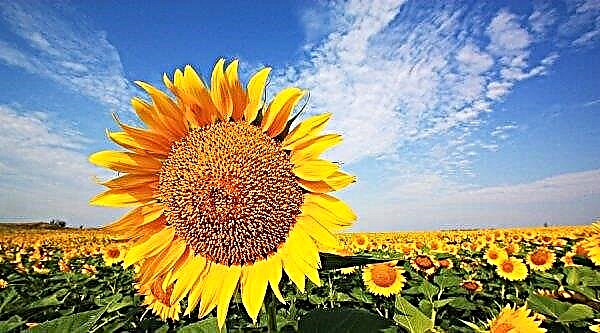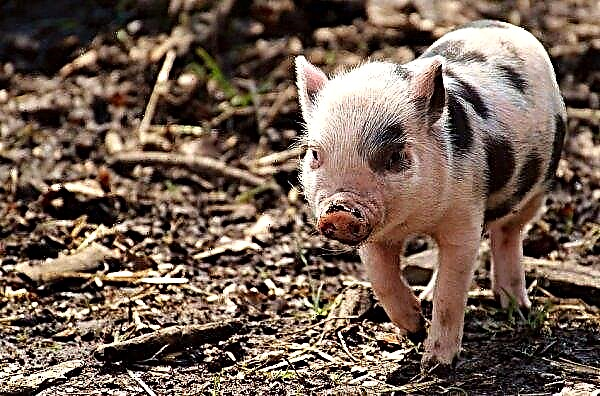Starting from the second half of winter, summer residents select varieties of pepper for growing on a personal plot. Given the large assortment of seeds, making a choice is difficult. The review is devoted to the high-yielding variety of large-fruited pepper Hercules.
Description and characteristics of the variety
Hercules F1 was developed by CLAUSE. Packing of seeds in bags is made by various companies called Hercules.
Hercules is a powerful branchy bush with a height of about 0.5 m, which can grow up to 0.8 m. It can be grown with support on a trellis or peg, as the bush is very tall. It is permissible to plant in open ground or in a greenhouse.
Dark green leaves develop rapidly. Therefore, without molding the bush, a highly thickened plant is obtained. To exclude the spread of disease, it is necessary to control the density of the crown.
Fruits ripen 90-100 days after emergence. So, when planting seedlings in May, the crop can be expected in August. Technical maturity occurs when the fruits reach the correct size and turn green.
After 2 weeks, biological maturity sets in, to which the fruits turn bright red. The fruit is cubic in size - 12 × 11 cm. Sweet, juicy pulp tastes good for eating raw, for preparing various dishes and preparations. The dense peel, without roughness, provides excellent appearance, transportability and durability. The meaty part is about 7 mm thick. Weight of 1 fetus is 200 g.
Sweet, juicy pulp tastes good for eating raw, for preparing various dishes and preparations. The dense peel, without roughness, provides excellent appearance, transportability and durability. The meaty part is about 7 mm thick. Weight of 1 fetus is 200 g.
The average number of fruits that form on the bushes is 8–12 pcs. The yield is 3–3.5 kg per bush, so the variety is high-yielding.
Hercules is resistant to most nightshade diseases. Outdoor cultivation is permissible in the southern regions at high daytime temperatures and a long growing season. In the middle lane, it is recommended to grow a variety in a greenhouse.
Important! You can eat and sell Hercules in the stage of both technical and biological maturity.
Advantages and disadvantages of the variety
- The variety has many advantages:
- due to the large amount of dry matter is the most acceptable for all types of blanks;
- juicy and sweet fruits are not bitter, and are considered universal in use;
- large-fruited;
- resistant to fusariosis, tobacco mosaic virus;
- the fruits are characterized by good transportability and presentation, high keeping quality.
- Minuses:
- it is demanding on heat, and when the temperature drops below + 21 ° C it grows, but it bears fruit worse;
- Demanding on soil nutrition.

Culture cultivation
Hercules is grown in seedlings. Seeds are planted in containers for 8–10 weeks before the last spring frost. After emergence and 2 real leaves, plants dive. 10 days before planting, seedlings are hardened and fertilizers applied.
After spring frosts end, the soil warms up, plants are planted in open ground, where they continue to care for the soil and pepper bushes.
Seed preparation
If you plan to grow peppers, keep in mind that different varieties have different seed germination times. This may take 2 weeks or more. Germination rate is also affected by illumination, air temperature, and humidity.
Important! Always store seeds in a heated room. Storage at low temperatures reduces their germination by 60%.
Seed preparation:
- Soak the seeds in hot water for 2 hours. Water temperature must be at least + 60 ° С. This is necessary to destroy the pathogenic microflora.
- In order to increase the germination rate and ensure the plants have the same development, they are treated with a growth stimulant, for example, “Heteroauxin”. For each stimulator, the rules for its use are prescribed. Soaking usually occurs for 6-10 hours. It also improves the endurance of plants and their resistance to diseases.
- For peppers to sprout faster, seeds need to be sprouted. To do this, they are placed in a damp paper towel and placed in a fastening plastic bag. After a few days, they will hatch, and they need to be dropped into glasses.

Tank selection
The assortment of containers for seedlings is large. This can be a container from improvised materials: glasses made from dairy products, wooden crates or specially designed containers for seeds in the store. For planting, it is better to choose peat pots. They are both fertilizer and capacity for growth at the same time. Pots are sold at flower shops.
Soil requirements
Use a mixture that is sufficiently loose and nutritious.
The composition may be as follows:
- 1/3 of good garden soil (not clay, because it is very dense);
- 1/3 rotted cow manure;
- 1/3 sand or perlite.
Sand provides soil looseness. Manure - the intake of potassium and other trace elements. If the acidity level of the soil from your garden is increased, manure will help reduce it. The acidity of the soil for growing peppers should be around 6.5 pH.
Place 2-3 seeds in each pot. This is necessary in order to ensure that 1 pepper will grow in each pot. Deepen the seeds into the ground by 0.5 cm. Moisten the soil with a spray gun. Cover with cling film to create conditions for accelerated germination of seeds.
Did you know? Bright red or orange bell peppers have a sweeter taste and higher nutrient content than green, which is characterized by a bitter taste.
They will germinate in about a week at a temperature of +21 ... + 26 ° C. When shoots appear - leave the strongest sprout in the pot.
Seedling Care
Seedling care includes:
- creating an optimal microclimate;
- dive;
- top dressing;
- watering.
The optimal conditions for seedling growth are heat (+ 18 ° C) and humidity (about 70%). Therefore, containers with seedlings are installed in a warm room with intense lighting. Watering is organized so that the soil is moist, but not wet.
Pepper does not like dryness, so do not allow drying. The optimal format for watering is spraying from a spray bottle without large drops of water.
If the lighting is uneven, for example, “from the window”, add fluorescent light so that the plants do not stretch and are illuminated from all sides equally.
Dive - a plant transplant procedure in the phase of 2-3 true leaves. To do this, a special pointed stick (French "piquet") is introduced into the soil to remove the seedling. The lower part of the root is cut - this will enhance the formation of peripheral roots. Transplantation of each seedling is carried out in a peat glass, where it will grow until the moment of planting in the ground.
After a dive, seedlings are fed. It should include nitrogen, potassium and phosphorus. For top dressing, dissolve 6 g of superphosphate and 1 g of urea in 2 l of water. Pour the root zone with the solution. The same top dressing is carried out a week before transplanting seedlings into the ground.
Did you know? In the oldest treatises of Japan, the benefits of fertilizing plants with feces were described. It was believed that the feces of the rich — the most high-quality fertilizer due to the improved nutrition of this category of people.
10 days before planting in the soil, seedlings begin to harden. To do this, they are daily taken to a site protected from the wind and direct sunlight for several hours. This will help them get used to the climate in which they will have to grow.
Transplant to the soil
A week before planting seedlings prepare beds for pepper. Culture loves warmth, so it is necessary that the air warms up not lower than + 14 ° С at night before planting in the ground, and the threat of spring frosts is over.
Choose a sunny area to land. But so that the plants are not directly under the sun all day.
Tillage and pepper planting:
- If there is a suspicion that the soil has been infected with wintering pests since last season, then it should be disinfected. To combat the larvae of beetles, treatment with boiling water is used. This is the easiest way to till.
- To make the plants comfortable, the soil can be covered with a black film. This will help warm it up to a temperature of + 18 ° C.
- Loosen the soil.
- Dig trenches under pepper and add rotted manure to the bottom of the trench (1.5 kg per 3 m²).
- Cover it with a layer of earth.
- Pour over water.
- Remove the seedlings from the pots. If these are peat pots, then you can plant plants with them, cutting the top.
- Set the plants 20 cm apart.
- Fill the trench with earth and compact it around the trunks.

Plant care after transplanting into the ground
Plant care after planting in the soil consists of:
- maintaining an optimal microclimate;
- formation of bushes;
- glaze;
- fertilizer application;
- loosening;
- weed removal;
- hilling;
- harvesting.
The optimal conditions for pepper growth are temperature +23 ... + 27 ° С and humidity 60–65%. In the process of growth, pepper “likes” to touch the leaves of neighboring plants. Therefore, for air to circulate around the bush freely, the crown needs to be thinned out.
Water the pepper several times a week. Switching to daily watering will be needed if the weather is dry and hot. In order to maintain moisture, the crops are mulched. It also prevents the germination of weeds, reduces the risk of infection with late blight and pests.
If you need to remove weeds, work carefully with a garden hoe, because pepper has a root system close to the surface. Try not to damage it.
Fertilizers are applied 2 weeks after planting in the ground and then every 3-4 weeks. As the harvest appears, consider that the pepper bears several waves, and it is not advisable to leave ripe fruits on the bushes. So you delay the onset of development of the next group of fruits. Control the pests. Peppers like aphids and fleas. They are dangerous twice: by damaging plant tissues and by infecting bacteria through damage. To control pests, broad-spectrum insecticides or those aimed at a specific type of insect are used.
Control the pests. Peppers like aphids and fleas. They are dangerous twice: by damaging plant tissues and by infecting bacteria through damage. To control pests, broad-spectrum insecticides or those aimed at a specific type of insect are used.
Important! High temperature destroys the nutrients in bell pepper, so it’s best to eat it raw. Cook the pepper so that the cooking temperature is as low as possible and the processing is short.
Watering and feeding
Rules for standard watering:
- Water as the soil dries up - 2-3 times a week. In the heat - daily. Before watering, make sure that the soil is 4-6 cm dry.
- Water should pour slowly so as not to destroy the delicate roots by an intense stream of water.
- Do not soak the soil below 10-15 cm - it is at this distance that the roots of pepper are located.
- Try to keep water out of the leaves. This increases the risk of infection with late blight or rot.
Pepper requires nutritious soil for development. Since when planting you have already brought humus, the pepper does not need additional fertilizing, which can be done 2 weeks after planting. Therefore, if you see that the plant is developing well, carry out the following dressing 5-6 weeks after transplanting seedlings into the ground.
Choose both organic and synthetic substances for fertilizer. Farmers practicing eco-farming always bring organic matter as more natural and without side effects fertilizers. Use slow release organic fertilizer such as manure. Slow release of minerals improves soil. But the fast leads to the fact that the plants are stretched, the trunk becomes fragile and unable to keep the harvest of Hercules.
Use slow release organic fertilizer such as manure. Slow release of minerals improves soil. But the fast leads to the fact that the plants are stretched, the trunk becomes fragile and unable to keep the harvest of Hercules.
Feeding schedule:
- 10 days after planting;
- in the budding phase;
- in the phase of fruit formation.
You can use top dressing, in which the ratio of nitrogen, phosphorus and potassium is the same. Such compositions are called balanced. The fertilizer is dissolved in 10 liters of water and 1 liter of liquid is applied under each bush.
Hilling and loosening the soil
Loosening of the soil is carried out on the second day after watering. This is necessary to remove weeds and weaken the soil. After watering, the soil is compacted, does not let oxygen through and inhibits development. To avoid this, it must be loosened. If the crops are covered with mulch, loosening is not necessary. A layer of mulching material prevents the development of weeds, moisture loss and compaction.
Grade Hercules is tall. Its height is from 0.5 to 0.8 m. The weight of the crop of 1 bush is about 3 kg. To strengthen the root system carry out hilling. This is the process of increasing the earthen hill around the plant trunk. Spread the bush upon reaching a height of 0.3 m.
Plant formation
Pepper forms a plant in the form of the letter "Y". These are skeletal branches. If your bush has become thick enough, you need to start forming it. Skeletal branches are tied to a trellis or peg. From each of these branches lateral shoots extend to the side. Trim the first of them, and then - every third, alternating sides: internal and external.
Diseases and Pests
The variety is resistant to most nightshade diseases:
- tobacco mosaic virus;
- cucumber mosaic;
- pepper spotting;
- potato virus;
- late blight.
But spraying with Bordeaux liquid against late blight in the budding phase is mandatory. The drug is a solution of copper sulfate - a fungicide that has an antibacterial effect. The main active substance is copper ions.
When applied to plants, they react with moisture (dew, irrigation moisture), which creates protection against bacteria and viruses.
Pathogens exist in the external environment constantly. Protection will last all the time, but after rain it can be updated. Dilute a solution of Bordeaux liquid for spraying, following the instructions on the package: 300 g of substance in 1-2 liters of hot water.
Repeat spraying after 2 weeks, but with a 1% solution: 100 g of the substance in 1-2 liters of hot water. Blue vitriol is insoluble in cold water! Therefore, it should be heated as much as possible (+ 80 ° C).
Important! Fruits treated with chemicals less than 20 days ago are forbidden to eat. The concentration of toxins in them is dangerous for humans, and can cause poisoning.
As for pests, peppers come across:
- whitefly;
- scoop;
- aphids.
 All of them are insects sucking plant juice, so the methods of dealing with them will be the same. Insects show damage to the leaf plate: holes, dark spots due to which the leaves turn yellow and fall off. It is impossible to avoid pests in open ground.
All of them are insects sucking plant juice, so the methods of dealing with them will be the same. Insects show damage to the leaf plate: holes, dark spots due to which the leaves turn yellow and fall off. It is impossible to avoid pests in open ground.Therefore, farmers set special traps in order to identify pests in time and spray them with special insecticides from various insects.
Step-by-step instructions for pest control:
- Remove all weeds because they can attract pests.
- Lay a layer of reflective polyethylene mulch sized 2 to 3 inches to prevent thrips, whiteflies and aphids.
- Check plants for damage twice a week. If there are traces of insect exposure, treat the bush with an insecticidal spray to treat weevils, cruciferous fleas, aphids, whiteflies.
- Hang pheromone yellow sticky traps on a bush or trellis before flowering to catch pests on time. Check pest traps twice a week in the morning.
- Use insecticides when detecting pests.
Features of collection and storage
Pepper Harvesting Recommendations:
- Pick fruits as they ripen.
- Cut them with scissors just above the base of the fruit.
- Do not pull the fruits so as not to break a branch or bush.
- Keep in mind that Hercules can be harvested in the phase of technical maturity (green fruits) and in the biological phase (when the fruits turn red). In both cases, the taste will be good.
 In the refrigerator, harvested crops can be stored for 7–10 days at a temperature of + 7 ° C. Fresh pepper in the room is not stored for a long time - it begins to fade. Therefore, if the crop is preserved, then harvest it immediately before processing.
In the refrigerator, harvested crops can be stored for 7–10 days at a temperature of + 7 ° C. Fresh pepper in the room is not stored for a long time - it begins to fade. Therefore, if the crop is preserved, then harvest it immediately before processing.When choosing varieties for growing on the site, pay attention to the Hercules variety. It has many advantages, unpretentious in content. If you follow the agrotechnical rules, then from August to October you can get 3–3.5 kg of an excellent crop from each bush.

